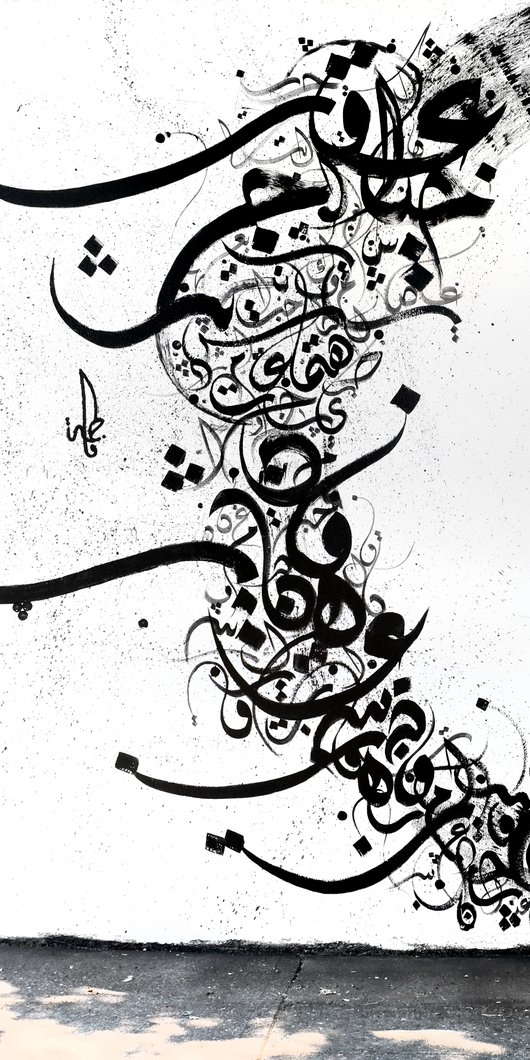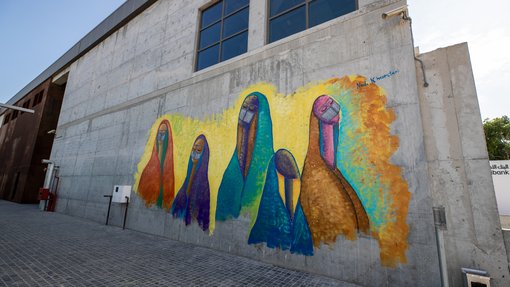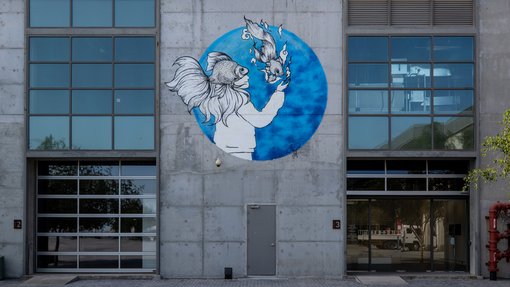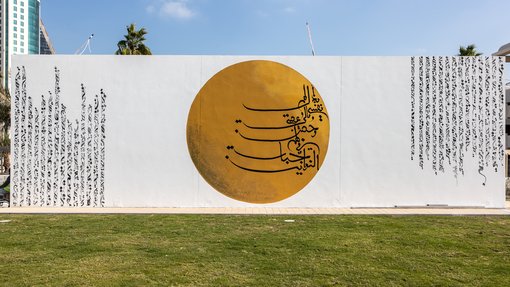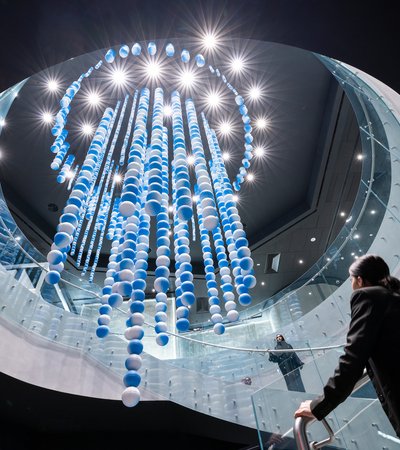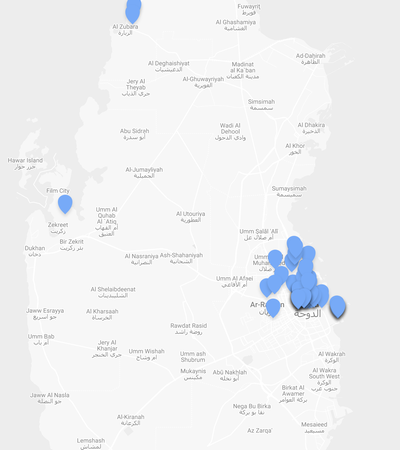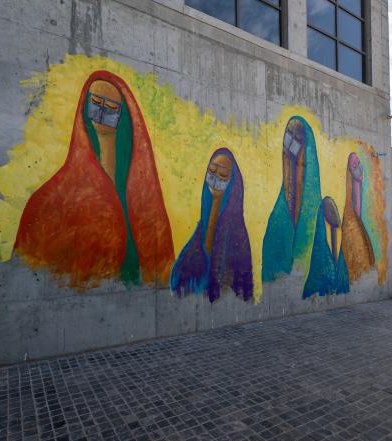Artists Fatima Alsharshani, Huda Basahal and Nada Khozestani share a deep appreciation for the impact of their art on society. They believe that art has the power to shape cultures and foster a deeper understanding of humanity. Their works evoke emotions, provoke thoughts and inspire others to embark on their own creative journeys. Whether through murals or calligraphy, their art serves as a bridge, connecting hearts and minds through the captivating beauty of words and culture.
Each of the artists has created murals as part of Qatar Museums’ Jedariart programme. Works by these artists can be seen across various spaces in Doha, such as Fire Station and Post Office Park. We spoke to them about their inspirations, what drives them and what their futures might hold.
Q. How did you decide to become an artist?
Nada Khozestani: Becoming an artist was never a conscious decision; rather, it was a natural evolution that has been woven into the fabric of my life from an early age. As far back as I can remember, I've been captivated by the world of visual expression, drawn to the magic of transforming blank canvases into vivid interpretations of imagination.
Fatima Alsharshani: I don't think there was a specific moment that made me make the decision. It started as a hobby, and I refined this hobby by self-teaching, learning, researching and attending educational workshops. The journey then began. I also firmly believe that I did not choose art, but art chose me.
Huda Basahal: Since I was a child my favourite hobby has been fine art and doing all kinds of handicrafts. I always dreamed of becoming an art teacher so I could live my hobby. From my childhood, I kept exploring all kinds of arts. I then decided to study art education to achieve my dream so I did, alhamdulillah, and became an art teacher for 10 years.
